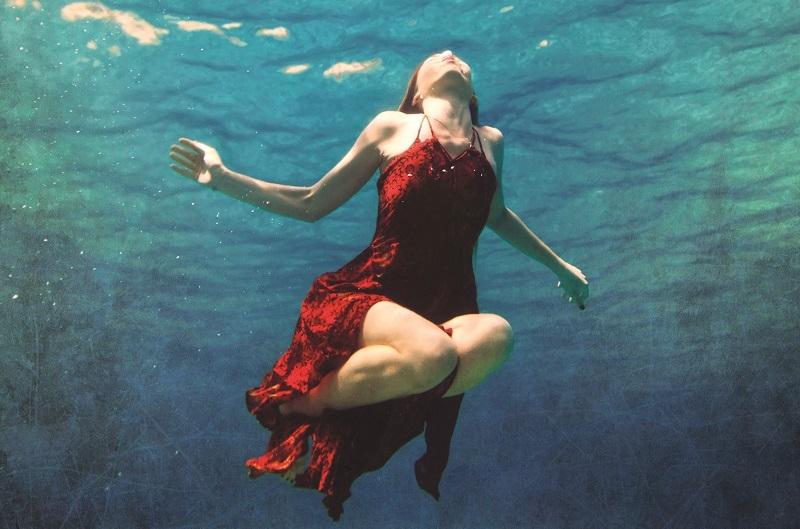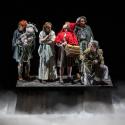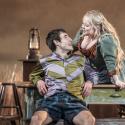As a child I was bewitched by the tale of The Little Mermaid. I had it on a record and would play it and sit and sob on the settee, much to the bewilderment of my brothers. It wasn’t until years later that I found myself wondering what it was about this dark coming of age story, about a mermaid who had her tongue cut out, that spoke to me so powerfully. Rereading the story years later I realise that the story is about the experience of puberty and the self-consciousness that comes with it, a sort of loss of self.
The mermaids live beneath the ocean in a state of unselfconscious freedom until they come of age and swim up to the surface to see the world above. Leaving behind the amniotic fluid of the ocean the mermaid is suddenly confronted by herself as a separate entity in a vast universe. From this moment there is no going back to safety. She has glimpsed the world in all its beauty and brutality and in that same instance fallen in love with a mortal Prince. She can no longer remember what it is to feel complete within herself. For the first time in her life she experiences desire and with it comes loneliness. She must live beneath the ocean, invisible to the world of men, or else sacrifice her tongue, her voice in order to walk and try to gain the Prince's love. She is warned that every step she takes she will feel like she is walking on knives.
It seems that even my 10-year-old self understood that there was something in this impossible choice that I could recognise. As a girl I sensed that to leave behind childhood was to risk losing the freedom to exist on your own terms, to sacrifice your voice in order to try to please others, to gain their approval and love. The mermaid’s silence, her reliance on her physical beauty to win the Prince, expressed an uncomfortable reality. Whatever I might be inside, it was what I looked like that determined my value.
The Mermaid’s story speaks of the extreme lengths women will go to alter themselves to win approval
In an age of mass media, of Facebook, Instagram and Snapchat we are constantly looking at our own reflections and at idealised images of others. We spend vast amounts of money on beauty products. Dieting is an obsession and use of plastic surgery has quadrupled in 10 years. Fifty thousand women had invasive procedures in Britain last year. Removing all body hair has become the norm. It feels like this is a story with increasing relevance. It’s not surprising that we are seeing an epidemic of self-harm amongst teenage girls. As women obsess about calories and totter around in six-inch heels to make themselves appear thinner, the Mermaid’s story speaks of the extreme lengths women will go to alter themselves to win approval and of the crippling self-consciousness that can characterise modern life.
That’s not to say that we shouldn’t enjoy styling and decorating ourselves. That is an innate human instinct that we see in all humans, even in tribes in remote places who have no access to mirrors. It can be a source of pleasure and creativity if it is not based in a sense of lack, of inadequacy. (Pictured below: Polly Teale in rehearsal)
 It’s strange to think that it is only relatively recently that ordinary people have had access to mirrors. I often wonder how it would alter our sense of self if we had no idea how we appeared to others. I decided that in the world beneath the ocean there were no mirrors, that the mermaids would not know what they looked like. They would be unselfconsciously curious, like very young children or animals, living inside their bodies looking out at the world, not watching themselves with a critical gaze. It is not until they witness the world above that they understand themselves to be separate beings who are visible to others. With this understanding comes self-consciousness and the knowledge of our essential aloneness, of death, of anxiety, of need and desire. In my version of the story the mermaids are immortal. Beneath the ocean there is no time.
It’s strange to think that it is only relatively recently that ordinary people have had access to mirrors. I often wonder how it would alter our sense of self if we had no idea how we appeared to others. I decided that in the world beneath the ocean there were no mirrors, that the mermaids would not know what they looked like. They would be unselfconsciously curious, like very young children or animals, living inside their bodies looking out at the world, not watching themselves with a critical gaze. It is not until they witness the world above that they understand themselves to be separate beings who are visible to others. With this understanding comes self-consciousness and the knowledge of our essential aloneness, of death, of anxiety, of need and desire. In my version of the story the mermaids are immortal. Beneath the ocean there is no time.
I wanted to see our world through the mermaid’s eyes in all its strangeness. To see the arbitrary hierarchies that exist, how simply by accident of birth some lives are given great importance while others are completely expendable. I wanted to see the bizarre nature of Royalty and it’s archaic sexism whereby Princes are sent to war whilst Princesses are dressed up in ever-changing expensive clothes to receive bouquets of flowers and wave at crowds of admirers. Few of us have ever heard Kate Middleton speak. I wanted to see through the eyes of the mermaids our obsession with a certain artificial, narrow idea of beauty, to see the power of the media to distort and shape our sense of self.
The play begins very much in our contemporary world. There is a sense of the recession, of a family struggling to cope. At the beginning of the play we see how a teenage girl is ostracised because she is still, at 13, playing imaginary games. She lives by the sea and loves to swim and is fascinated by Mermaids, imagining that they exist and can speak to her. I wanted to explore the pressure on young women to grow up quickly and abandon play, becoming preoccupied by appearance, judging one another and seeing one another as competitors.
Our production will involve a chorus of young women recruited in each city on tour who will create the sound of the mermaid’s singing. They will also take part in a nationwide project that accompanies the show that looks at the effect of the media on girls’ sense of self and empowers them to challenge myths about femininity. Onstage the mermaid chorus will bear witness as a girl faces the challenge of becoming a young woman in a complex world.















Add comment